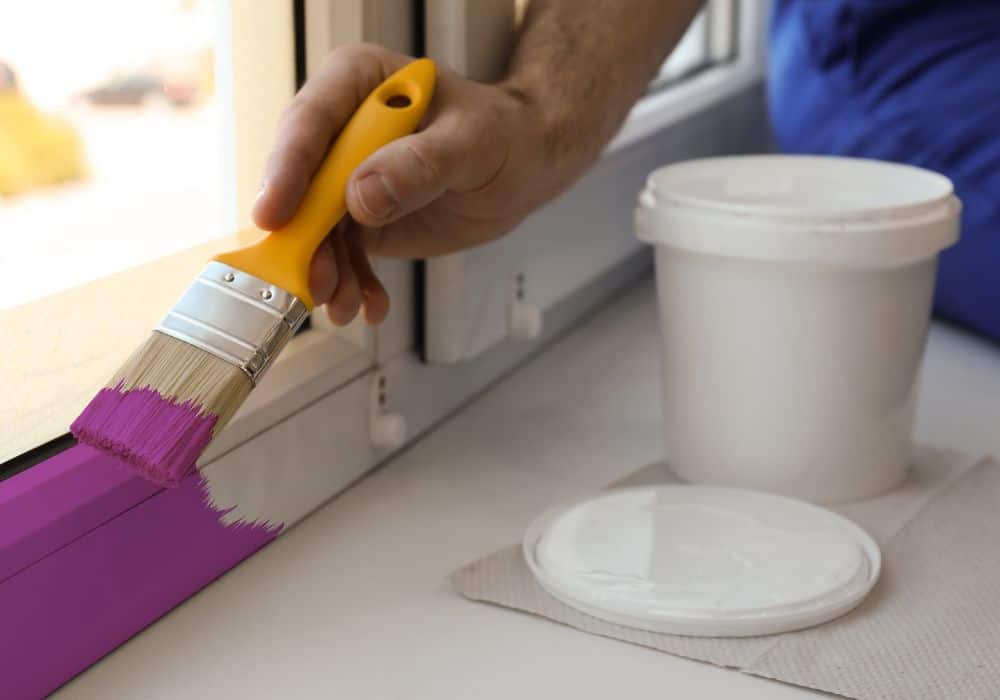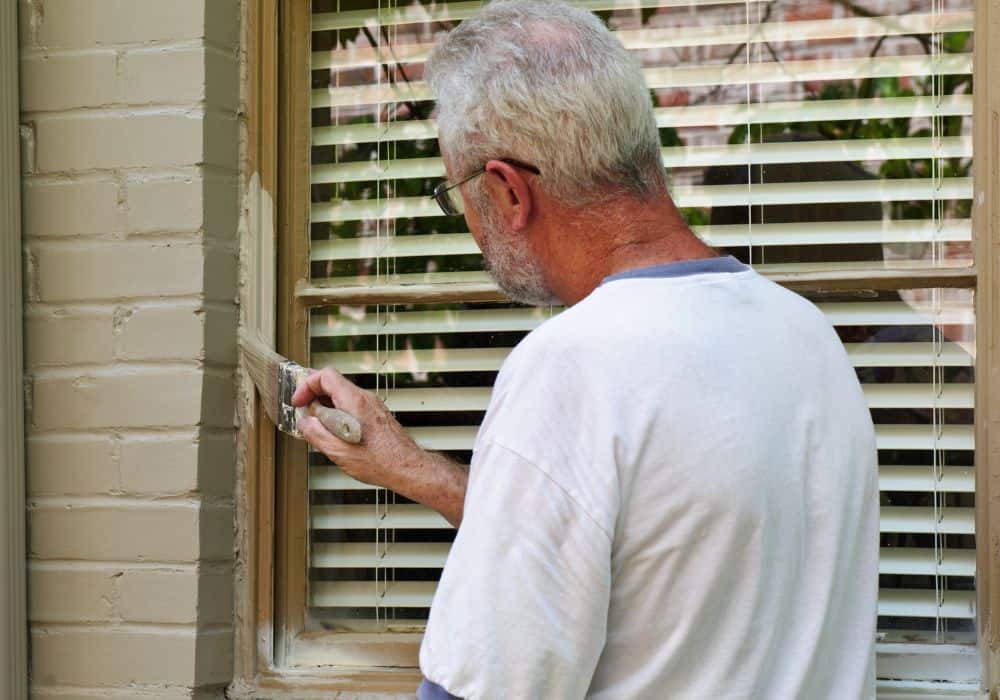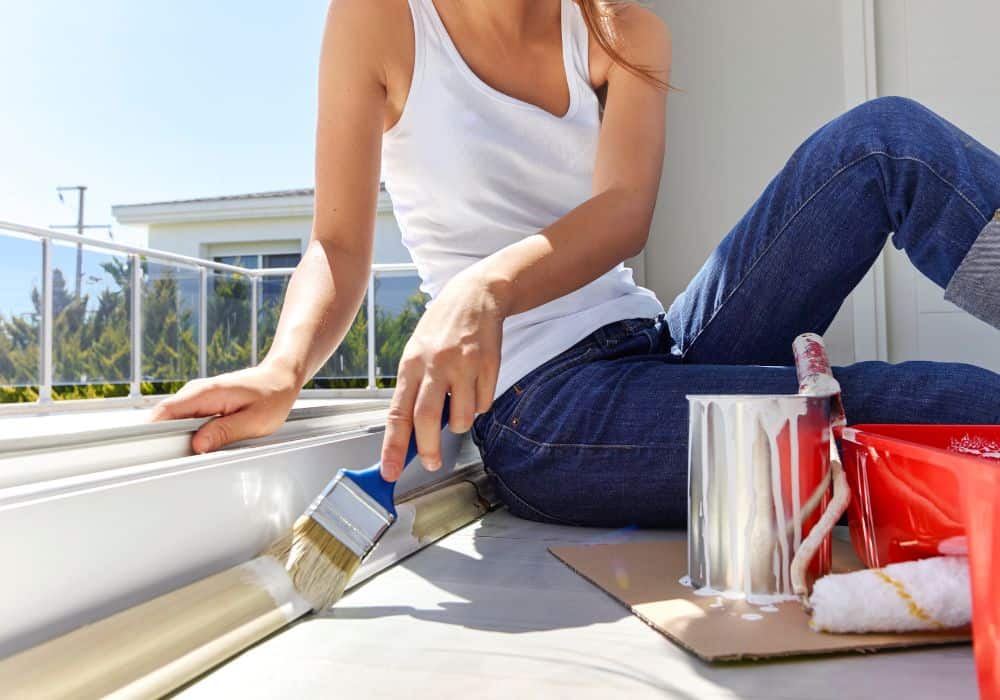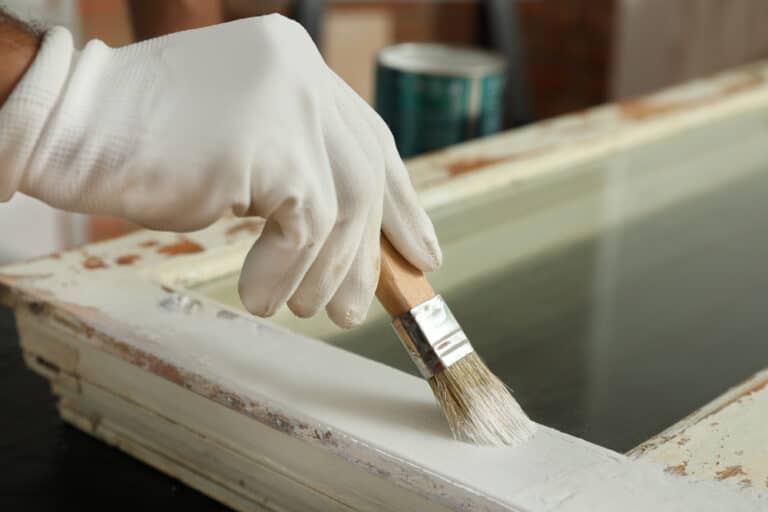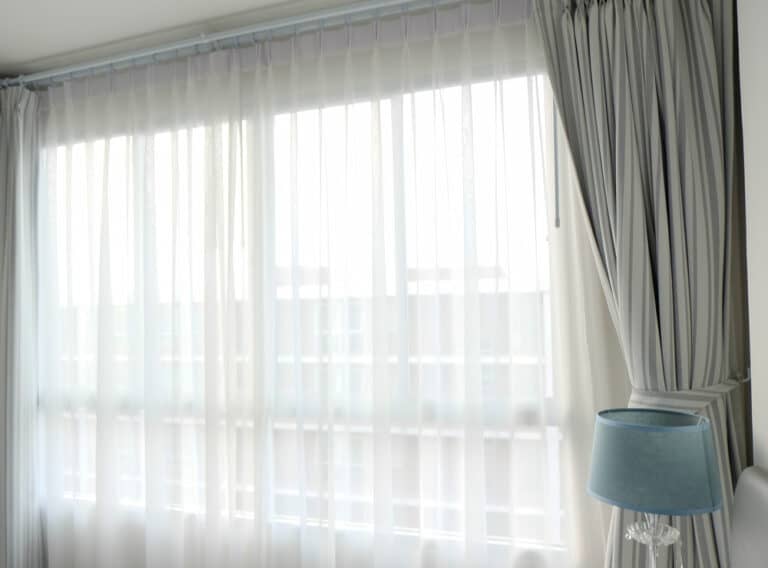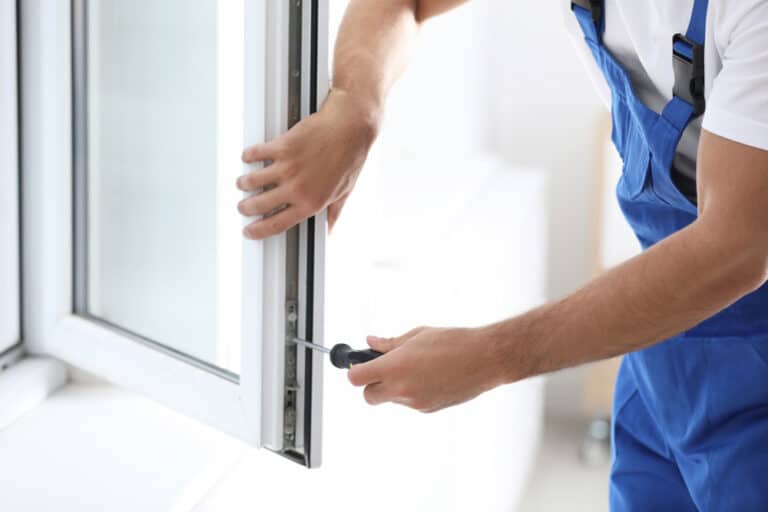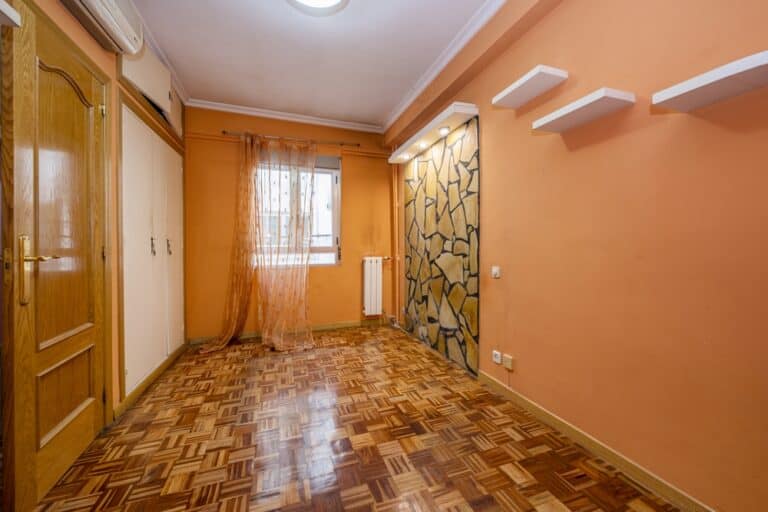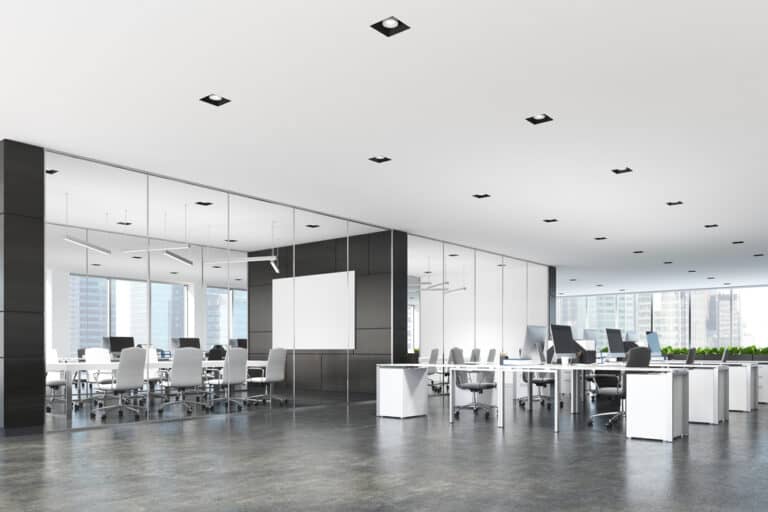The window trim is an unsung hero in our homes. These tiny boards are essential to help cover up all the seams between our window frames and wall. And when painted, they can help enhance a window pane’s beauty.
But dirt and mold can make our trims look worse for wear. And eventually, that nice coat of paint will begin to chip and break off. You’ll be left with no other choice but to get them repainted.
Luckily, painting interior window trimming is a standard job for all professional painters. And with the proper preparation, it can be pretty cheap to do.
This article will use average industry prices to explore how much you can expect to pay to paint interior window trim. We’ll also highlight what factors can increase (or decrease!) the final price.
The average cost of painting a window trim:
When hiring a professional painter, you can expect to pay between $1 and $ 6 per linear feet (or $2.75 per sq. ft). Using the standard size of windows usually amounts to $25-$100 per window.
This price usually includes the labor and raw materials needed to complete the task. While this price may seem quite reasonable, several factors can sharply increase that price.
Five factors that impact the price of painting interior window trim
1. Material
One of the most significant factors influencing the price of your window trim is the material itself. Particular material requires specialized treatment, care, and paint to cover them effectively. You may also need ti to apply a coat of primer beforehand.
The different prices include:
- Wood: Wooden trim is one of the most common types of trim and, thankfully, is the cheapest, too, ranging from $1-6 per linear foot. That said, wood trimming often requires sheening and gloss to make it well and truly shine.
- Aluminum: Similar to wood, aluminum is an easy and cheap material to paint, ranging between $1-6 per linear foot. Acrylic latex is the best type of paint to stick to this metal.
- Fiber cement: This material is slightly dearer, costing between $2-6 per linear foot. You may also need to use a latex primer to prep the material.
- Brick: Though not typically found inside, brick trimming can set you back between $3-6 per linear foot. You also need to thoroughly clean and caulk the brick beforehand.
- Vinyl: Finally, vinyl requires specialized treatment to paint correctly and costs the most at $3-6 per linear foot. You may also need to use high-quality paint to stick and treat the trim with fungicide.
2. The difficulty of the job
If your trim requires more attention, precision, skill, or equipment, the cost will rise accordingly. Modern window trims can often come with different crown molding and intricate, ornate designs that look great when painted but can prove costly to actually paint.
A painter will usually charge more if they need to use multiple colors for these designs, apply additional coats of paint, or avoid certain trim features. If you have electrics like sidelights built in or around trims, you’ll also need to adequately protect these with painter’s tape and pay an increased fee accordingly.
3. Location
The more difficult the window trim is to reach, the costlier the job becomes. While first-floor windows will be easy to access, a two-story house may have many hard-to-reach windows that are impossible to access under normal circumstances.
A painter may need to use a stepladder, install supports, or hire additional help to reach the trimming. The window trim will require your painter to use a stepladder or various tools to get at the trimming.
Additionally, if the trimming is in a small, enclosed space, and the painter can’t use a roller, this can add to the cost. They may need to incorporate finer equipment and work considerably slower to complete the job.
4. Length of the job
Professional painters may charge two different rates, depending on their setup. For large-scale trim jobs, they may give you an estimate for the total project. But particularly for smaller window trim jobs, painters will charge you a fixed hourly rate to compensate for their time spent, including a call-out fee.
This usually amounts to between $20-30 per hour, though it can be higher depending on the painter and their busy schedule. For this reason, it’s recommended that you have all interior trimming painted simultaneously to consolidate these labor costs.
5. Surface prep work
There are a lot of things that you can do before painting your trim that can help reduce cost and time. This includes laying down coverings to protect nearby flooring and furniture, taping around the window frame, and other room fixtures like low switches and furniture.
You should also try to strip and scrape old paint off the trimming, especially if changing the color completely. Professional painters may charge upwards of $400 for this task alone.
Use a damp cloth to scrub the trim to stripe old paint. Use gentle strokes so s not to scratch the trim. Only consider using a paint-stripping solvent if the old coat is persistent. Ensure your room is well-ventilated throughout the process.
You should also use this time to inspect the condition of the trim. Painters often avoid working on rotting, warped, or otherwise damaged surfaces.
Finally, if you want a particular shade of paint that requires mixing, you may need to factor this into the price of the job, and the time it will take to source the shade of color. For example, specific trim colors like black are automatically more expensive because they are in demand and harder to clean from tools afterward.
How often should you paint window trim?
Generally, it is best to repaint your interior window trim every 2-4 years. It’s a good idea to paint two coats on trimming to extend and preserve its color and cut down on how often you need the job done.
You may need to paint trimming more frequently if windows are low off the ground or in dusty rooms like the garage or a porch. Dirt will gather quicker, and paint can become chipped and worn. That said, sometimes, all that might be required is a small touch-up paint application.
How much does the paint cost?
Whether painting yourself or supplying your professional, you may be curious to know how much the paint itself will cost.
Generally speaking, a gallon of regular paint will cost you $20. Interior oil-based paints can range upwards of $40 or more.
We also recommend buying slightly more gallons of paint than you need. This allows you to touch up the trim in the subsequent months when needed and easily correct scuff marks and peeling.
DIY Trim Painting Tips and Tricks
Regardless of if you’re painting your interior window trim by yourself or hiring a painter, there are certain things you can do before, during, and after that can help reduce the cost and improve the end result of your trim. These include:
- Inspect the material before you paint the interior trim. Look for signs of damage, including warping, rot, or decay. Replace or repair accordingly.
- Scrape off the old paint before beginning your work. An old wet rag is usually enough. Consider using a solvent for persistent old paint, and smooth down trim with sandpaper.
- If using solvent, protect yourself accordingly. Ensure your room is well-ventilated, and wear protective face coverings.
- If hiring a professional, drop cloth around the trim, baseboards, and surrounding areas beforehand to save time. Use painter’s tape to protect flooring, window accessories, and nearby furniture.
- Caulking between your trim and the wall helps prevent dirt from affecting the frame. You may also need to prime trimming before applying any paint.
- Avoid using exterior paint for interior trimming.
- Consider applying a coat of eggshell or semi-gloss finish to shine, buff, and extend the durability of your trimming.
- If you paint yourself, always buy more than the required amount. This ensures you have leftover material for small touch-up jobs throughout the year.
- Always paint from the top of the trim, slowly moving downwards. This helps create a consistent, high-quality finish to the edge.
- The best time to hire a painter is during Fall and early winter. This is usually a painter’s “down” season when they offer their best discounts.
Conclusion
Your window trim is an integral part of your home. Not only does it help protect the joining between your window frame and wall but gives you a significant opportunity to design your room further.
A good paint job on a window trim is always noticed.
As our article shows, there is a lot to consider when painting your window trim, and several factors can influence how much the job will ultimately cost you. But there are ways to reduce the price, ensuring you get the window trim of your dreams without breaking the bank!
If you still have questions about the average cost of painting your window trimming or have tips you’d like to suggest, please leave a comment.
If in doubt, remember:
- Expect to pay a professional painter between $1 and $ 6 per linear ft of trim (or $2.75 per square footage)
- The material of the trim can affect the price – wooden trim is by far the cheapest, while vinyl is the most expensive.
- It would be best if you aimed to have your interior trimming painted every 2 to 4 years.

